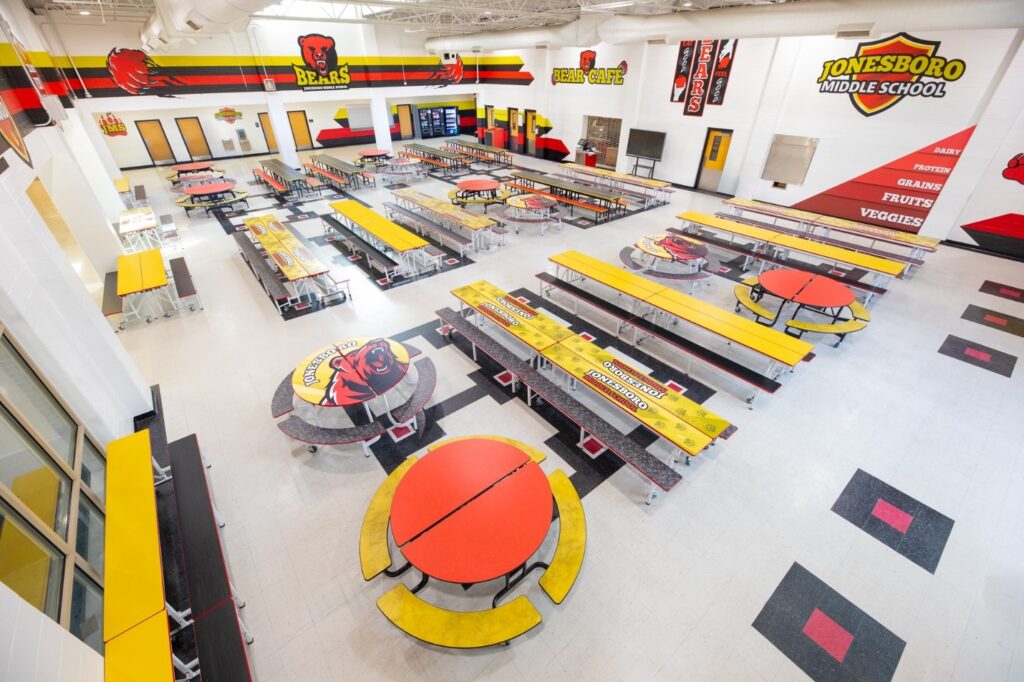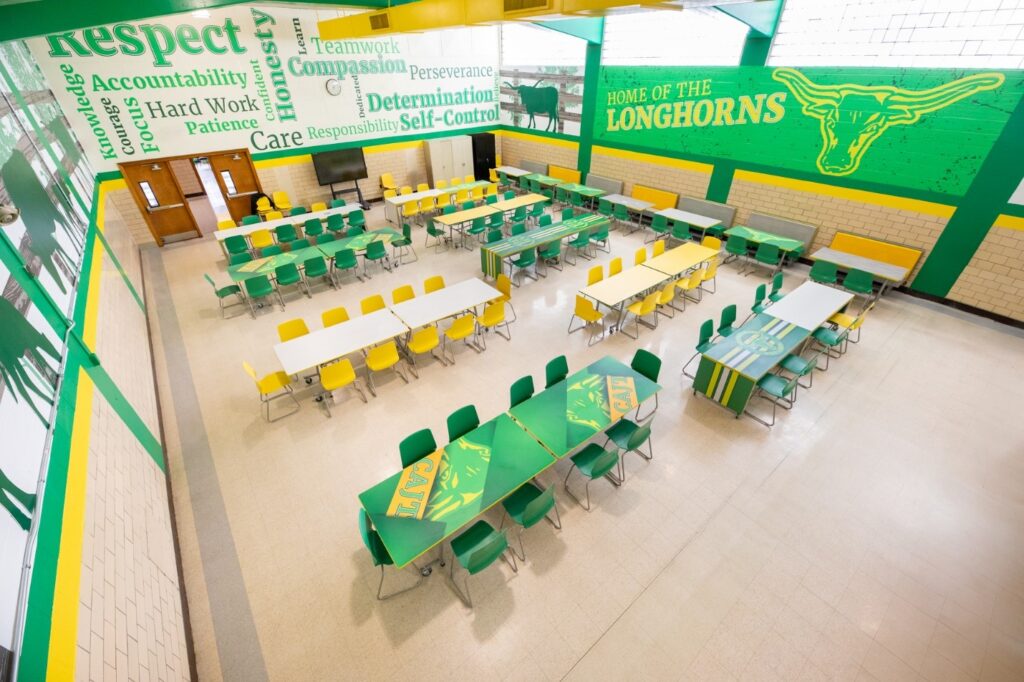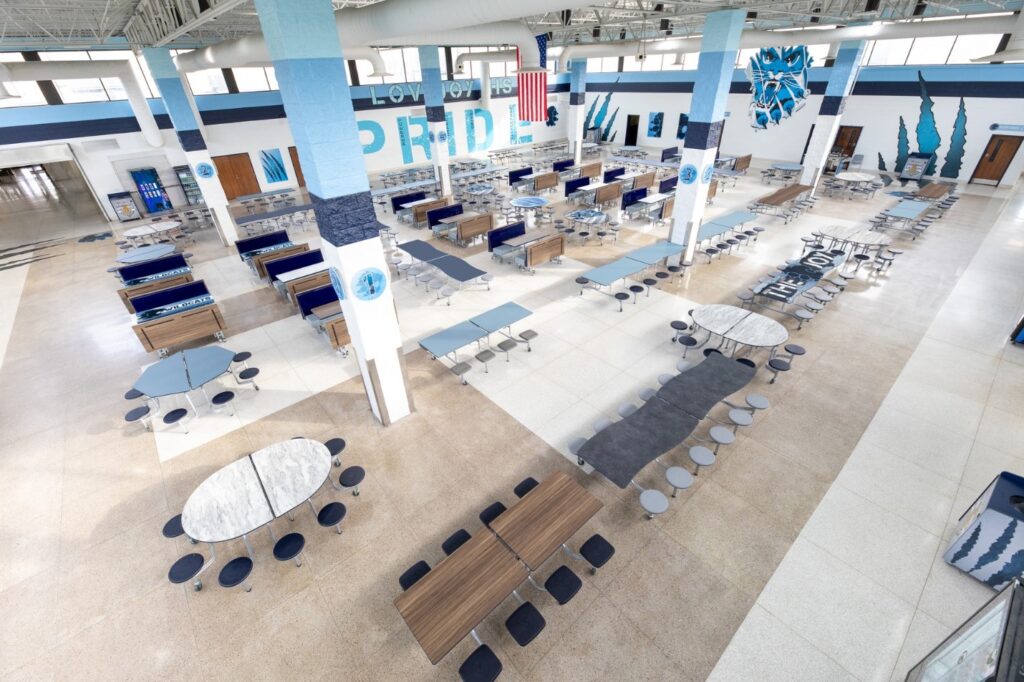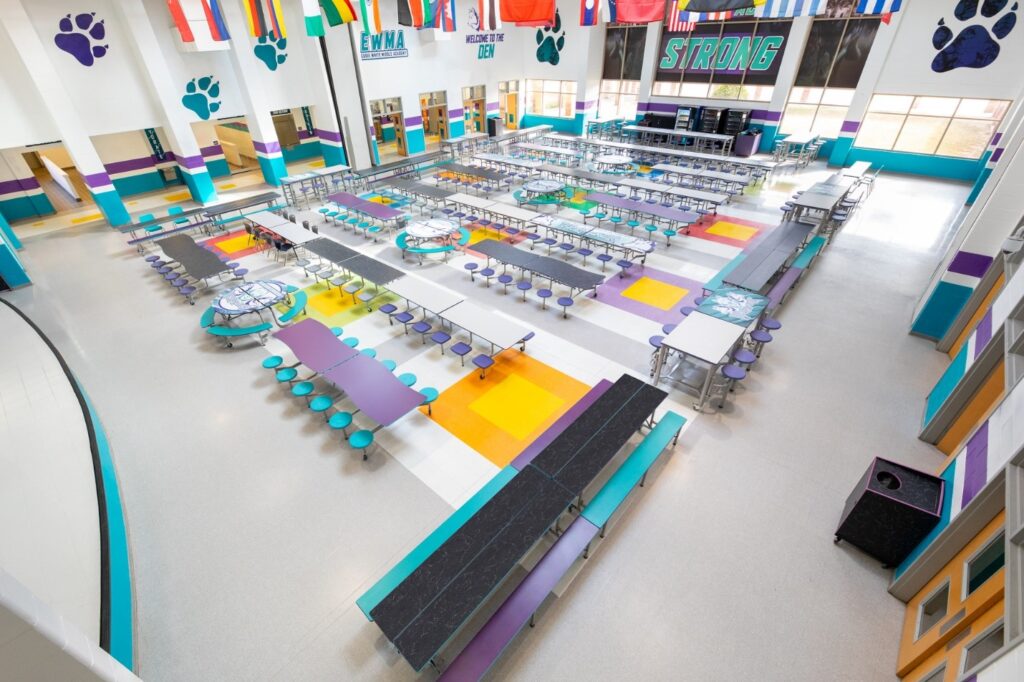In the dynamic environment of educational institutions, where learning is a constant, it is crucial to nourish both the minds and bodies of students. Schools today are revolutionizing their cafeterias, turning them into lively, inviting spaces that promote social interaction, emotional well-being, and a sense of community. Let’s delve into how schools are focusing on creating modern, popular, and enjoyable food courts that students eagerly anticipate visiting every day.
Moving Beyond Traditional Designs
Gone are the days of long, brown tables and uninspiring dining spaces. Schools are now reimagining their cafeterias to create vibrant environments that reflect the dynamic nature of their student populations. This shift involves replacing outdated furniture with contemporary designs that are not only visually appealing but also functional and comfortable. Modern cafeterias now feature versatile seating options, interactive technology, and designated areas for socializing, studying, and relaxation. These changes aim to create a more welcoming atmosphere that encourages students to connect and collaborate, enhancing their overall school experience.
Catering to Diverse Preferences
One of the key elements in modern school cafeterias is the introduction of mix-and-match furniture. By providing a variety of seating arrangements, schools can create a dynamic environment where students have the freedom to choose where they want to sit each day. This flexibility can significantly enhance their dining experience. Additionally, incorporating ergonomic designs ensures comfort, while vibrant colors and patterns stimulate a positive atmosphere. These thoughtful elements not only make the cafeteria a more pleasant place to eat but also promote social interaction and a sense of community among students.
Creating a Comfortable Atmosphere
The aesthetic appeal of a cafeteria plays a crucial role in making it an inviting space. Schools are now incorporating vibrant colors, natural light, and contemporary designs to create an atmosphere that is both energizing and relaxing. By using bold patterns and creative artwork, these spaces become visually stimulating, encouraging students to enjoy their mealtime. Additionally, large windows and skylights maximize natural light, creating a warm and welcoming environment. These design choices not only improve the overall ambiance but also contribute to a positive dining experience that can enhance students’ mood and well-being.

Enhancing School Spirit and Community
Signage, graphics, and décor are essential components in the modern school cafeteria. These elements not only enhance the visual appeal but also promote school spirit and a sense of belonging among students. Customized wall murals featuring school mascots, inspirational quotes, and student artwork can transform the cafeteria into a vibrant hub of school pride. Additionally, themed décor for different seasons or events can keep the environment fresh and engaging, making the cafeteria a central part of the school community. This thoughtful integration of design elements helps foster a welcoming and inclusive atmosphere.

Promoting School Identity
Thoughtfully designed signage and graphics can guide students efficiently and foster a sense of community. Custom logos and designs on walls and furniture reflect the school’s identity and instill pride among students. Additionally, interactive digital displays can be used to share daily menus, upcoming events, and student achievements, further engaging students and keeping them informed. Wayfinding signs help students navigate the space easily, reducing confusion and creating a smoother dining experience. These elements collectively contribute to a cohesive and dynamic cafeteria environment.
Utilizing Décor to Elevate Experience
Adding a splash of color and school-themed décor can transform a bland cafeteria into a vibrant social hub. Schools are now using these elements to create environments that encourage more students to participate in school meal programs. Bright, inviting colors and engaging themes make the cafeteria a fun place to be, fostering a sense of excitement around mealtimes. By incorporating school colors and themed areas, the cafeteria becomes a lively and integral part of the school culture, promoting increased student involvement and participation.
Increasing Participation
A significant challenge for schools is ensuring students participate in the school meal programs. By creating appealing and engaging dining environments, schools are successfully increasing student participation. These redesigned spaces not only attract more students but also encourage them to enjoy their meals in a relaxed and welcoming atmosphere. Interactive elements, such as digital menu boards and themed food stations, add excitement and variety to the dining experience. Additionally, involving students in the design process can give them a sense of ownership and pride, further boosting their willingness to participate in the meal programs.
Fostering Social and Emotional Growth
Creating a modern, popular, and fun food court has a profound impact on students’ overall well-being. These environments promote social interaction, relaxation, and a sense of community, contributing to a positive school experience. By offering diverse seating options and comfortable, inviting spaces, schools can encourage students to spend more time in the cafeteria, fostering friendships and collaboration. The integration of healthy food options and engaging activities also supports students’ physical health and mental well-being. Ultimately, a thoughtfully designed food court enhances the school’s culture, making it a central hub for student life and creating lasting, positive memories.
Providing Spaces for Interaction
Well-designed cafeterias become nurturing grounds for social and emotional growth. They provide spaces where students can interact, build friendships, and find solace amidst their busy academic schedules. These environments foster a sense of belonging and community, helping students feel more connected to their peers and school. Comfortable, aesthetically pleasing spaces can reduce stress and promote relaxation, contributing to better mental health. Additionally, incorporating areas for group activities and quiet study corners allows for a versatile use of the space, catering to different needs and enhancing the overall school experience.

Long-term Benefits
Investing in modern school cafeterias is an investment in the future. Students who have positive dining experiences are more likely to develop healthy eating habits and a lifelong appreciation for nutritious food. These habits can lead to improved academic performance, as proper nutrition is linked to better concentration and energy levels. Moreover, a well-designed cafeteria can serve as an educational tool, teaching students about the importance of balanced diets and sustainable food practices. By prioritizing these spaces, schools are not only enhancing the immediate well-being of their students but also laying the foundation for healthier, more informed adults.

Transforming School Dining for the Future
The transformation of school cafeterias into modern, popular, and fun food courts marks a new era in school dining. By prioritizing the design and functionality of these spaces, schools are sending a powerful message: the well-being of their students is at the heart of their mission.
As schools continue to innovate and invest in these vibrant dining environments, the positive impact on student engagement, health, and happiness will undoubtedly shape the future of education. The journey towards creating the ultimate K-12 food court is ongoing, but the results are already proving to be a recipe for success.

